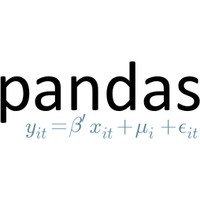Green Bank Observatory
A quick look into my personal involvement with the Green Bank Observatory.
Detecting low-frequency Gravitational Waves using Pulsar Timing.
I have assisted Dr. Romano and Dr. Paliyaguru in their work on explosive transients and electromagnetic follow-up of triggers from The Laser Interferometer Gravitational-Wave Observatory (LIGO) from July 2019 to January 2020. To better understand my work, a brief introduction into gravitational waves and pulsars is needed (see below).
Gravitational waves are 'ripples' in space-time caused by some of the most violent and energetic processes in the Universe. Albert Einstein predicted the existence of gravitational waves in 1916 in his general theory of relativity where he showed that massive accelerating objects (such as neutron stars or black holes orbiting each other) would disrupt space-time in such a way that 'waves' of space-time would radiate away from the source at the speed of light; these waves carry with them information about their origins and allows researchers to learn about the very nature of gravity itself. It took about 60 years since its prediction for these graviational waves to be discovered. It was the discovery of a binary pulsar by two astronomers using the Arecibo Radio Observatory in Puerto Rico in 1974 that allowed to study a system which general relativity predicted should radiate gravitational waves. Knowing that this discovery could be used to test Einstein's audacious prediction, astronomers began measuring how the stars' orbits changed over time. After eight years of observations, they determined that the stars were getting closer to each other at precisely the rate predicted by general relativity if they were emitting gravitational waves. Since then, many astronomers have studied pulsar radio-emissions (pulsars are neutron stars that emit beams of radio waves) and found similar effects, further confirming the existence of gravitational waves. But these confirmations had always come indirectly or mathematically and not through direct contact. All of this changed on September 14, 2015, when LIGO physically sensed the ripples in spacetime caused by gravitational waves generated by two colliding black holes 1.3 billion light-years away.
My work in this project is part of a bigger project where the ultimate goal is to detect the low frequency gravitational waves. The research question that we wanted to answer is whether we can detect the gravitational waves by timing pulsars. Initially, I assisted with the optical and mechanical construction of a mini LIGO prototype for our department. Through this experience, I learnt a great deal about machining, sensitive hardware assembly, and laser and mirror calibration. Later on, I was asked to assist with data analysis of the various sets of Pulsar data generated by the Green Bank Telescope. I was trained by the Pulsar Search Collaboratory (PSC) team (certification pending), after which I conducted various curve fitting and model analysis routines to group data sets (based on pulsar timings). Due to the sheer volume of data and insatiable need for computing power, I was given access to the High Performance Computing Center at our university, where I submitted my analysis scripts as multi-threaded batch jobs. The project was terminated when one of my PI (Dr. Paliyaguru) left her position at our university to join as a Radio Astronomer at the Arecibo Observatory.

A sample figure showing my reconstruction attempt misses the very quiet tails of the GW signal (as expected due to the SNR per pixel threshold)






